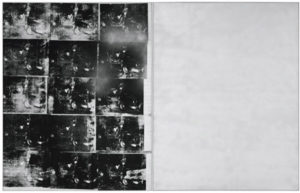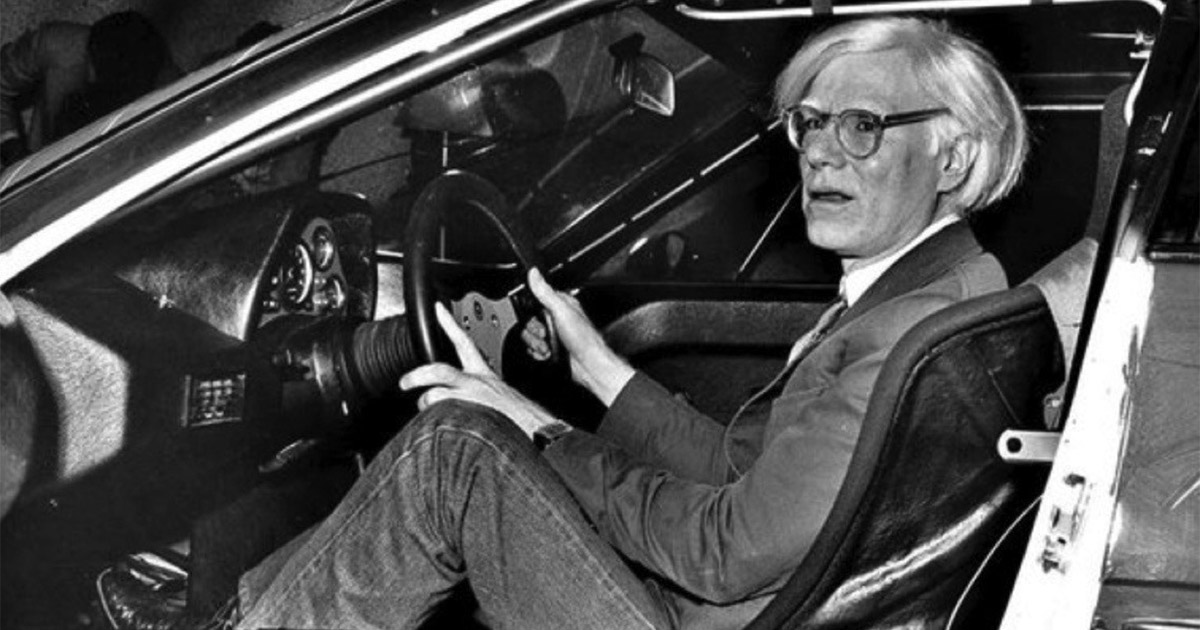Death and Disaster is a compelling series of works by prolific pop artist Andy Warhol (Pittsburg, 1928- Manhattan, 1987). This body of work can be regarded as one of the most significant ever created by Warhol because of its explicit nature and crude social commentary that provides a stark contrast to his tempered images of soup cans and soap pad boxes. Warhol was first introduced to the idea of creating more abrasive pieces by up and coming gallerist and friend Henry Geldzahler over a lunch meeting in 1962. From this point moving forward, Warhol would go on to explore socially charged commentary in his works. Pieces like 129 Die in Jet (1962) from a New York Times cover page and portraits of the late Marilyn Monroe would serve as some of Warhol’s first attempts at exploring more macabre and heavier themes. Warhol appropriated images from police photo archives and newspapers which he would then project onto large silkscreen canvases. These images would be mass produced and arranged in a filmstrip-like way in preliminary steps and painted by hand industriously. The mass production of these images would allude to the statement that society is desensitized to this graphic imagery because of the media’s constant coverage and over exposure of these themes. Warhol’s intentions to intensify or dullen the viewers response to the image through repetition is up for debate. These works and other within this series depict the decay and death of the American dream in a very direct way, while his other works were focused on making commentary about consumerism. The entire body Death and Disaster is compiled of roughly 70 and some original works and their respective prints. The four largest works apart of the collection are Orange Car Crash, 14 times (1963), Orange Car Crash (1963), Black and White Disaster #4 (1962) , and Silver Car Crash, Double Disaster (1963). All of the works excluding Silver Car Crash, Double Disaster have been in the same private collection since 1988.
 Silver Car Crash, Double Disaster is the highest selling work of Andy Warhol’s to date. It was sold by an undisclosed European collector who owned it for over 20 years. The work was auctioned through Sotheby’s and sold at $105,445,000 USD in 2013. Although Silver Car Crash, Double Disaster is internationally recognized for its record breaking sale numbers, it has had little exhibition time and has only been displayed once in 26 years. It is one of four like it in size that has double panels. This particular one is the only one that remains in private hands as the rest currently hang in museums globally, it has a history of being owned by highly respected collectors such as Gunter Sachs, Charles Saatchi, and Thomas Ammann. This appalling work in one panel presents a lifeless body that lies amongst the wreckage of a car crash; the second panel is a plane of solid silver color. The first panel is very straightforward, Warhol presents the gruesome visual information in excess by stamping the same image across the canvas. The second panel in Silver Car Crash, Double Disaster stands in for a feeling that the viewer should be experiencing after seeing the first panel. It’s a feeling of reflection and emptiness that is evoked from witnessing this tragedy. Silver Car Crash, Double Disaster, and like others within this important series by Warhol convey a serious social message that intensifies the overall complexity of his oeuvre.
Silver Car Crash, Double Disaster is the highest selling work of Andy Warhol’s to date. It was sold by an undisclosed European collector who owned it for over 20 years. The work was auctioned through Sotheby’s and sold at $105,445,000 USD in 2013. Although Silver Car Crash, Double Disaster is internationally recognized for its record breaking sale numbers, it has had little exhibition time and has only been displayed once in 26 years. It is one of four like it in size that has double panels. This particular one is the only one that remains in private hands as the rest currently hang in museums globally, it has a history of being owned by highly respected collectors such as Gunter Sachs, Charles Saatchi, and Thomas Ammann. This appalling work in one panel presents a lifeless body that lies amongst the wreckage of a car crash; the second panel is a plane of solid silver color. The first panel is very straightforward, Warhol presents the gruesome visual information in excess by stamping the same image across the canvas. The second panel in Silver Car Crash, Double Disaster stands in for a feeling that the viewer should be experiencing after seeing the first panel. It’s a feeling of reflection and emptiness that is evoked from witnessing this tragedy. Silver Car Crash, Double Disaster, and like others within this important series by Warhol convey a serious social message that intensifies the overall complexity of his oeuvre.






